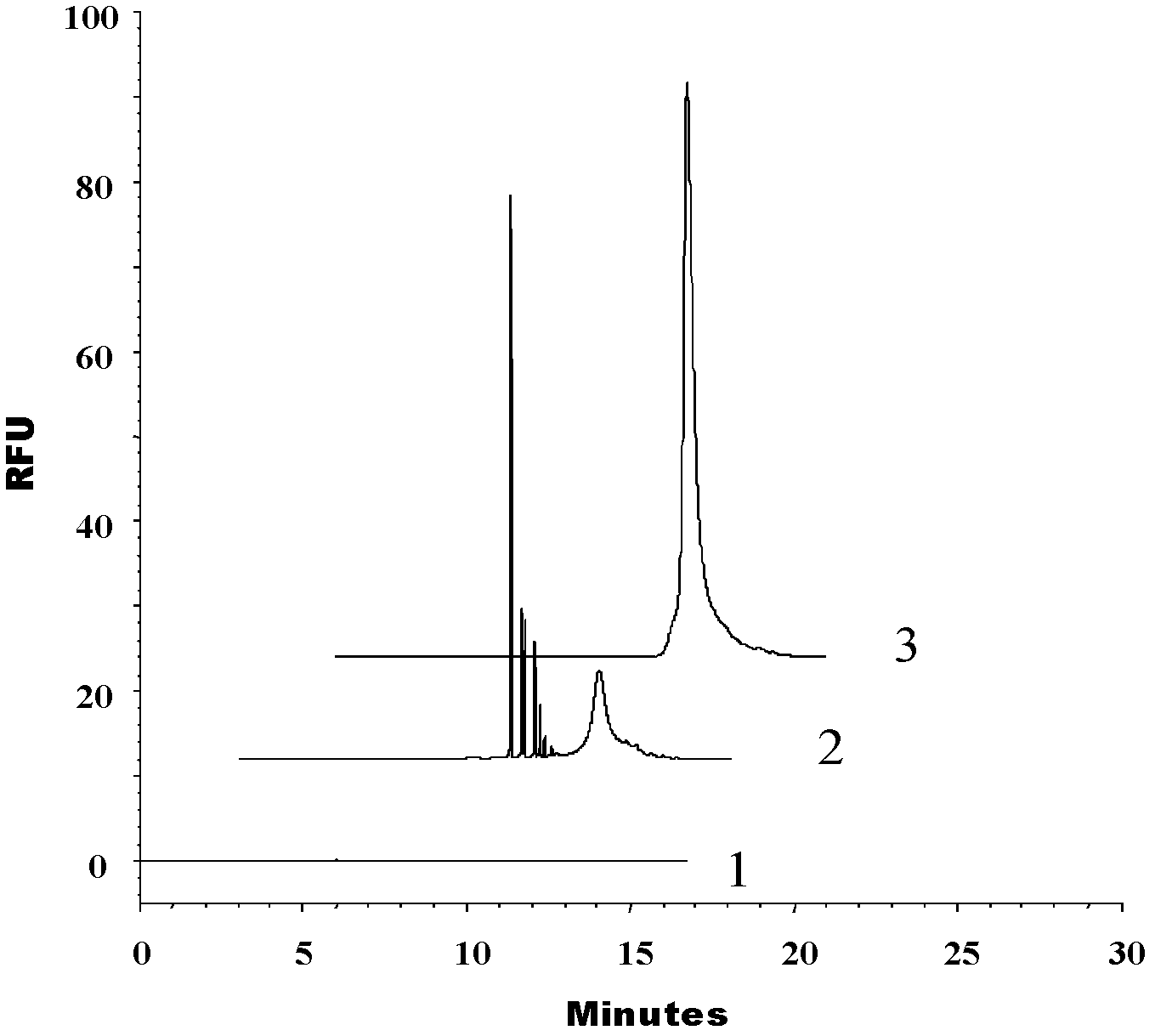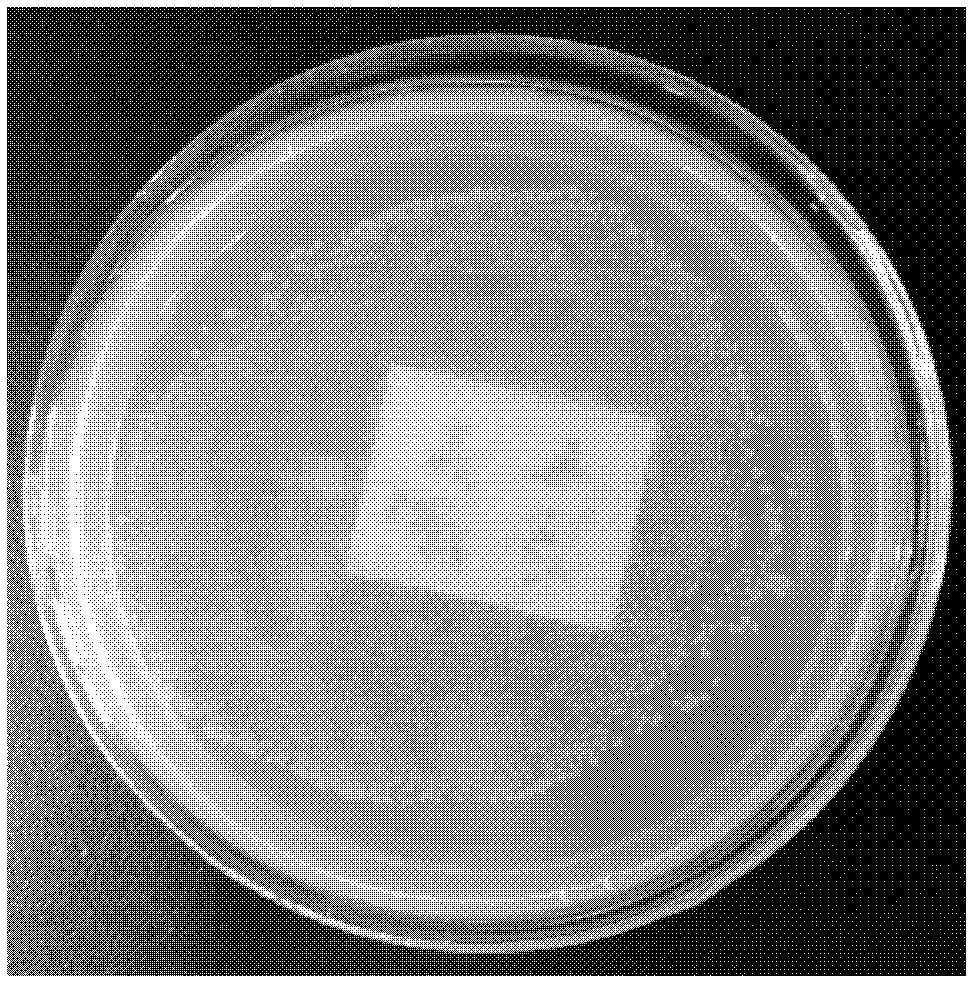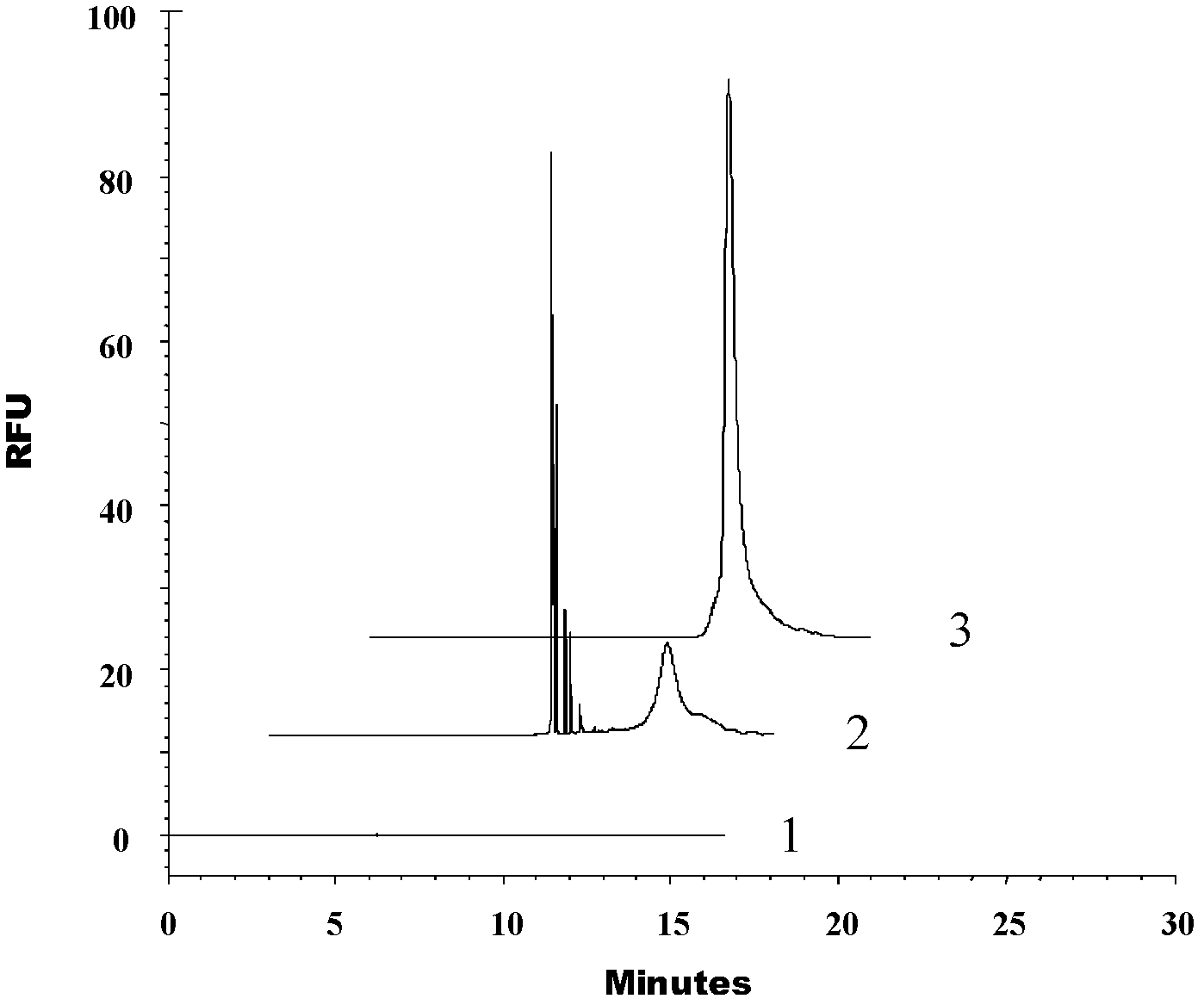Method for detecting bacteria by using protoplast through capillary electrophoresis
A technology of capillary electrophoresis and protoplasts, applied in the field of biological analysis, achieves the effects of high accuracy, simple preparation and operation, and low cost
- Summary
- Abstract
- Description
- Claims
- Application Information
AI Technical Summary
Problems solved by technology
Method used
Image
Examples
Embodiment 1
[0058] cultivate bacteria:
[0059] (1) Inoculate Escherichia coli on the ultra-clean workbench, pick a single colony of Escherichia coli from the plate, inoculate it in LB liquid medium, and cultivate it on a shaking table for 12 hours at a temperature of 37°C and a rotation speed of 200 rpm to obtain cultured Good E. coli.
[0060] (2) Inoculate Lactobacillus acidophilus on the ultra-clean workbench, pick a single colony of Lactobacillus acidophilus from the plate, inoculate it in MRS liquid medium, and culture it statically for 48 hours at 37°C to obtain the cultured Lactobacillus acidophilus acid lactobacillus.
Embodiment 2
[0062] (1) Take 1 mL of Escherichia coli cultivated in Example 1, centrifuge at 3000r / min for 5min, discard the supernatant to obtain a precipitate, and centrifugally wash the precipitate with boric acid-borax buffer for 3 times, and add in the precipitate after washing. 100 μL of lysozyme with a concentration of 12 g / L, 50 μL of boric acid-borax buffer solution, and 50 μL of 2 mol / L sucrose solution were preheated at 37°C for 5 minutes to obtain mixed solution 1, which was placed in a centrifuge tube and placed in a 37°C Bath in the water bath for 25min, then add 0.05mol / L ethylenediaminetetraacetic acid (EDTA) 50μL to the mixed solution 1 to obtain the mixed solution 2, in which the concentration of EDTA is 0.01mol / L, and the mixed solution 2 is kept at 37℃ Submerged in a water bath for 15 minutes to obtain a protoplast mixed solution of Escherichia coli; the protoplast mixed solution of Escherichia coli was centrifuged at 3000r / min for 5 minutes, the supernatant was discarde...
Embodiment 3
[0069] (1) Get 2 mL of Lactobacillus acidophilus cultivated in Example 1, centrifuge at 3000r / min for 5min, discard the supernatant to obtain a precipitate, and the precipitate is washed 3 times by centrifugation with boric acid-borax buffer, and added to the precipitate after washing. Preheat 100 μL of lysozyme with a concentration of 24 g / L at 37°C for 5 minutes, 50 μL of boric acid-borax buffer solution and 50 μL of 2mol / L sucrose solution to obtain mixed solution 1, put mixed solution 1 in a centrifuge tube and put it at 37°C In a water bath for 30 minutes, add 50 μL of 0.05 mol / L EDTA to mixed solution 1 to obtain mixed solution 2, in which the concentration of EDTA is 0.01 mol / L, and continue to bathe mixed solution 2 at 37 ° C for 20 minutes to obtain The protoplast mixed solution of Lactobacillus acidophilus; the mixed solution of Lactobacillus acidophilus protoplast was centrifuged at 3000r / min for 5min, the supernatant was discarded, and the precipitation was centrifu...
PUM
| Property | Measurement | Unit |
|---|---|---|
| length | aaaaa | aaaaa |
| wavelength | aaaaa | aaaaa |
| wavelength | aaaaa | aaaaa |
Abstract
Description
Claims
Application Information
 Login to View More
Login to View More - Generate Ideas
- Intellectual Property
- Life Sciences
- Materials
- Tech Scout
- Unparalleled Data Quality
- Higher Quality Content
- 60% Fewer Hallucinations
Browse by: Latest US Patents, China's latest patents, Technical Efficacy Thesaurus, Application Domain, Technology Topic, Popular Technical Reports.
© 2025 PatSnap. All rights reserved.Legal|Privacy policy|Modern Slavery Act Transparency Statement|Sitemap|About US| Contact US: help@patsnap.com



